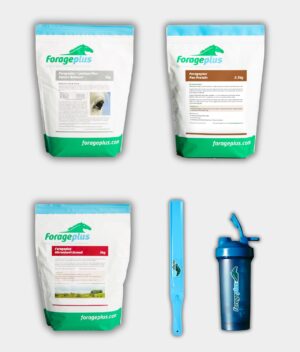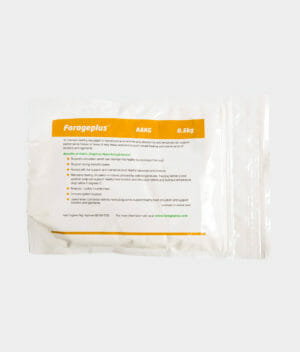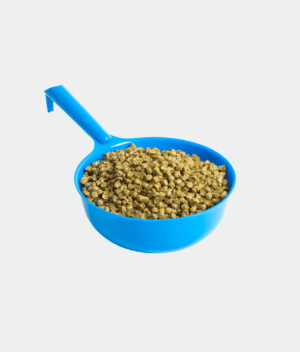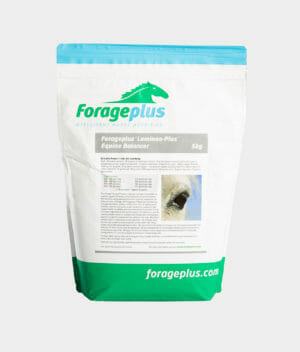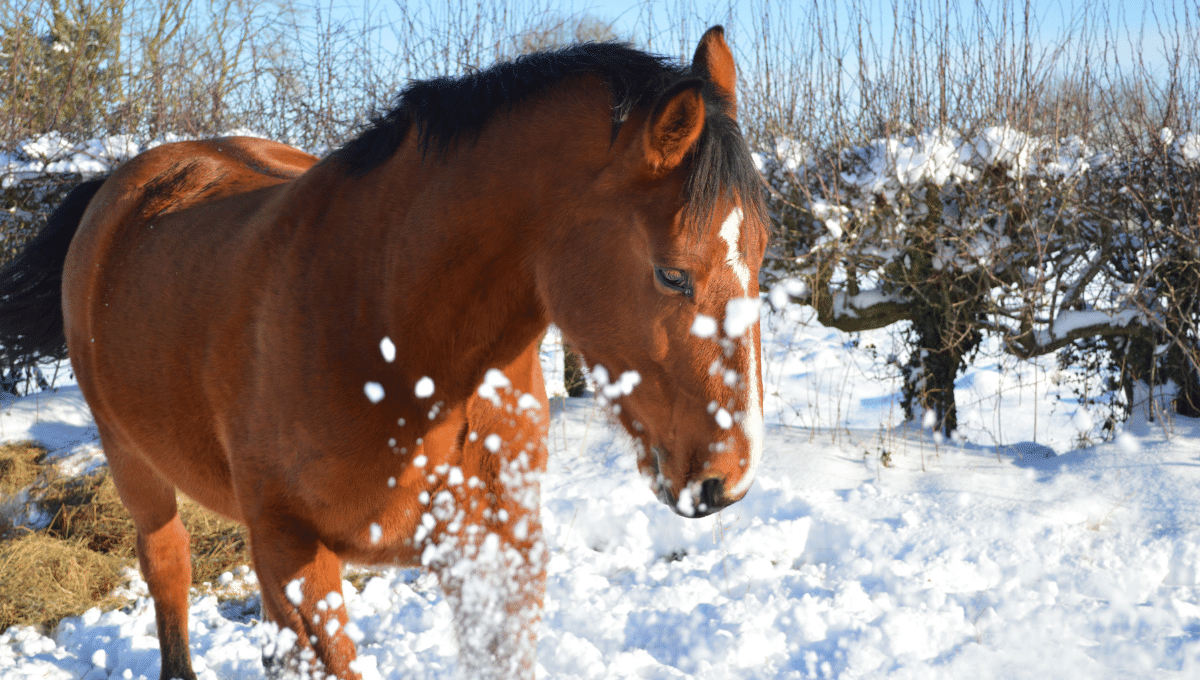Discover the benefits and drawbacks of feeding beet pulp to your horse. Make informed decisions for optimal equine nutrition. Read the full Forageplus guide now!
There are a lot of myths about beet pulp doing the internet rounds. Strangely there are lots of people who are very anti-beet pulp and that is a shame because it is a great feed for horses with a lot of benefits.
Essential Guide to Beet Pulp: Benefits and Considerations for Horses
The Forageplus horses all eat beet pulp as part of their daily feed. They are very healthy and are perfect examples of horses that have become more robust and resilient the longer time they have been on minerals, vitamins and protein, carefully balanced to the hay, haylage and grass they eat.
It is important to remember that the greatest influence on horses is the grass, hay or haylage they eat in huge amounts every day. Starting with this and understanding what is contained in this portion of the diet is the most important aspect of getting your horse’s nutrition right. You can read about this philosophy here.
A feed like beet pulp for horses can be included in the diet to boost calcium, add valuable fibre, meet higher energy requirements for performance horses, increase water intake, replace hay for elderly horses with compromised teeth, provide super fibres for optimum hind gut fermentation, and benefit from its high energy density.
What is Beet Pulp?
It is a valuable resource for horse owners looking to provide their horses with an energy-rich source of super fibres which are excellent for hindgut health and a slow-release safe carbohydrate source.
Beet pulp is a byproduct of the sugar beet industry, derived from the fibrous material left over after sugar is extracted from sugar beets. Sugar production involves processing sugar beet, which generates significant waste in the form of sugar beet pulp.
Sugar beet is harvested in the autumn and early winter when the beets are dug out of the ground. The processing begins by slicing the beets into thin chips, which increases the surface area making it easier to extract the sugar.
The extraction takes place in a diffuser, where the beet is kept in contact with hot water for about an hour before being squeezed in screw presses to extract as much juice as possible.
Despite the name ‘sugar beet’ sometimes given to it, it is a high-fiber, low-sugar and starch feed that can be used as a nutritious addition to a horse’s diet.
Beet pulp is available in various forms, shredded, molassed shredded, compressed pellets, molassed compressed pellets and micronised flakes.
Benefits of Beet Pulp for Horses
Digestive Health

Beet pulp, derived from the sugar beet industry, is an energy-rich source of digestible fibre that promotes a healthy microbial population in the hindgut. The processing of sugar beets removes most sugars, leaving behind a fiber-dense byproduct.
This dense fibre supports hindgut health by increasing numbers of cellulose-degrading microbes that break down fibre and produce butyrate through microbial fermentation. Butyrate helps maintain a healthy gut barrier and is the main energy source for cells lining the digestive tract. Research has shown that these benefits are observed regardless of whether the beet pulp is used as a total or partial replacement of forage in the horse’s diet.
The prebiotic fibres in beet pulp can help with hindgut issues such as free faecal water syndrome, hindgut dysbiosis or a decrease in gut function due to age.
The high water-holding capacity of beet pulp supports hydration, so its use in the daily diet can help reduce the risk of digestive disorders, such as colic.
Supporting Weight Gain
Beet pulp is an excellent choice for horses that struggle to maintain or gain weight, often known as “poor doers”. It is also effective for underweight horses needing extra calories to reach a healthier body condition.
An underweight horse typically has a body condition score of 4 or lower on the 9-point Henneke scale. For these horses, aim for gradual weight gain, with an ideal target score of 5.
With more calories than most meadow hays, beet pulp is also highly palatable, promoting consistent intake. Its high energy density supports healthy weight gain, making it ideal for horses that need extra calories. For even greater calorie support, consider mixing beet pulp with calorie-dense feeds such as flaked oats, micronised linseed and copra. The fibre in beet pulp means that digestion of the starch in a cereal such as oats will slow the release of carbohydrates. Adding a June cut grass hay or high-energy alfalfa hay can further aid in weight gain.
Keep in mind, that pairing beet pulp with alfalfa may increase the calcium levels in the daily diet. To correct this, adding a palatable, high-phosphorus feed like wheat bran or a high-phosphorous horse feed balancer can help.
Where poor weight does not respond to increased calories you should always address your worming approach and consult your vet to rule out or address any underlying causes of weight loss.
Feeding a proportion of beet pulp to old horses to partially replace forage can be very beneficial for their health. Beet pulp is an important part of any winter feeding regime to add a fermentable fibre-based feed to an elderly horse’s diet to help them maintain weight through the colder months. For those looking for amounts to use with an old horse, this article will help further. Beet pulp also adds important water into their daily diet as old horses are susceptible to cold weather dehydration. While most fibre in a horse’s diet comes from pasture or hay, alternatives like beet pulp can supplement energy, support digestion, and provide fibre, especially for old horses that struggle to chew traditional forage.
Beet Pulp as a Performance Feed for Horses
Reducing Gut Issues in Performance Diets
Performance horses often require high-energy diets, frequently supplemented with cereals. However, cereals high in starch and sugar can increase the risk of gastric ulcers and hindgut dysfunction. Research has shown beet pulp can be an ideal whole or partial cereal substitute, offering a safer energy source that supports body weight and performance without the added risk to gut health.
Hydration Benefits
Beet pulp holds a high capacity for water, making it particularly beneficial as a moist feed for endurance horses that need sustained hydration during long events. Soaked beet pulp serves as a fluid reservoir in the gut, allowing the horse to draw on this water source during exercise, promoting better hydration and thermoregulation. Research also indicates that fermentable fibre, like beet pulp, helps maintain hydration with less water lost in faeces, making it superior to hay in this regard.
Prolonged Energy Release
Beet pulp offers a slow-release energy source, ideal for horse endurance activities. As it ferments in the hindgut, it produces volatile fatty acids (VFAs) like acetate and propionate, which provide steady, long-lasting energy. Acetate enters aerobic pathways directly, substituting for glucose or fats, while propionate can be converted to glucose hours after feeding to support prolonged exercise. Molassed beet pulp provides additional immediate fuel, offering versatility for athletic horses.
Glycogen-Sparing Effect
By providing slow-release energy, beet pulp reduces the horse’s need to draw on stored glycogen in muscles and liver. Glycogen is a critical energy reserve used during exercise. Studies show that horses fed beet pulp have more glycogen left in muscle tissue post-exercise than those fed grains, helping to prevent fatigue and enhance performance.
Overall, beet pulp is an effective feed choice for performance horses, providing energy, hydration, and digestive health benefits that support peak athletic performance.

Beet Pulp for Laminitis Prone Horses
Focus on Reducing Hydrolyzable Carbohydrates (HC)
When designing a feeding plan for a laminitic or insulin-resistant horse, it’s essential to minimize hydrolyzable carbohydrates (HC), which are quickly broken down in the small intestine. These include ethanol-soluble carbohydrates (ESC) and starch, both of which can spike blood sugar and insulin levels. These carbohydrates are rapidly broken down to simple sugars by enzymes in the small intestine. High intake of HC, either over time or in a single meal, increases the risk of laminitis, so they are the fractions that should be limited in overweight or EMS horses.
Low HC bucket feeds for horses with or prone to laminitis
Unmollassed beet pulp has a low HC content and does not cause a blood sugar spike as cereals do this makes it suitable to use with insulin-resistant horses or equines with polysaccharide storage myopathy (PSSM) when fed without molasses.
If using beet pulp with residual sugar or added molasses, thorough soaking and rinsing, using a sieve to rinse the beet pulp before and after soaking, can remove excess sugars, making it a safe option even for horses with insulin resistance, however much caution should be used and it is preferable to use an unmolassed version which is rinsed.
Meeting Horse Nutritional Needs While Limiting HC
It’s crucial to ensure that even with a low-HC diet, your horse still receives essential nutrients like vitamins, minerals, essential fatty acids, protein, and fibre. Beet pulp can absorb 4 times its dry weight in water, which results in a high-volume but low-calorie meal and a good way to get extra water and supplements into the horse.
Using as a hay replacer?
Beet Pulp is a good choice for horses of all ages and needs being a versatile feed option. When hay supply is limited or of low quality, beet pulp can replace up to 45% of the forage in a horse’s diet. The horse’s stomach can handle dry beet pulp, debunking the myth that it requires soaking to prevent complications. This replacement supports the horse’s energy requirements while maintaining digestive health, as beet pulp provides fibre that encourages healthy hindgut function.
Unmolassed beet pulp is highly palatable and can meet the caloric needs of old horses, particularly those unable to consume enough hay or pasture. For older horses with dental issues who may quid (drop chewed feed), soaked beet pulp mash is easy to eat and can help them maintain a healthy body condition.
Choosing the Right Beet Pulp Product
The highest quality, cleanest sugar beet pulp should be chosen. Beet pulp is available dried with or without added molasses, with unmolassed beet pulp always containing less than 10% sugar, making it suitable for low-sugar diets, while molassed varieties average below 15% sugar.
The different types of beet pulp available for horses include:
- Plain (Unmolassed) Beet Pulp Pellets: These contain minimal sugar, making them ideal for horses with insulin resistance, laminitis, or those needing a low-sugar diet. Because the pellets are compressed they need to be soaked for approximately 12 hours in cold water (using hot water will decrease the minimum soaking time), with 1 part pellets to 5 parts water. It is important to feed the soaked feed immediately after soaking so as to reduce the chance of the product fermenting and spoiling. To clean the pellets and reduce the sugar and iron content a large sieve can be used to rinse the soaked beet pulp through.
- Molassed Beet Pulp Pellets: This beet pulp version has molasses added, which increases palatability and reduces dust but contains a higher sugar content. This product is not a suitable choice for horses and ponies prone to laminitis. These are also compressed into hard pellets that require thorough soaking in the same way as the unmollassed version to soften before feeding.
- Shredded Beet Pulp: This is the pulp without it being compressed into shreds. Normally it comes only as a mollassed version and is commonly fed to sheep without soaking. It can be fed to horses, is easier to soak and quick to absorb water. The added molasses means that without a lot of rinsing it is not suitable for laminitis-prone horses.
- Dehydrated Beet Pulp Flakes: These are flattened, micronised flakes of beet pulp which will soak very quickly even in cold water. Micronized beet pulp soaks faster than regular beet pulp because the micronization process creates a larger surface area, which reduces the time required for soaking. This form of beet pulp will soak in 5 minutes in hot water or 10 minutes in cold water. Some common brand names are, Speedi-Beet, Kwik Beet and Equiglo.
Each type has its unique benefits, and selecting the right form depends on the horse’s dietary needs, ease of feeding, and any sugar sensitivity concerns.

Debunking Common Myths about Beet Pulp for Horses
Dr Eleanor Kellon VMD has advocated using soaked beet pulp with horses for many years. She has written about the myths circulating the horse-owning population which often means people are worried about including this very useful feed in their horse’s diet. She has debunked five of the common myths:
1. Myth: Contains Leaves and Causes Oxalate Poisoning
- Fact: Beet pulp does not contain beet leaves. The leaves are removed mechanically, not with chemicals, before harvest, and oxalate levels in beet pulp are extremely low, making oxalate toxicity from beet pulp impossible.
2. Myth: The Production Uses Harsh Chemicals
- Fact: No harsh chemicals are used in beet pulp production. After the sugar is extracted through hot water soaking, only minimal antimicrobials like hydrogen sulfide are used to control bacterial growth in the sugar water. This same biocide is commonly used in wine preservation.
3. Myth: Causes Hind-End Weakness and Muscle Loss
- Fact: This claim is baseless. The theory that oxalates in beet pulp “bind up” calcium, leading to nutrient malabsorption and weakness, is inaccurate. While oxalate toxicity is real, it does not occur with beet pulp and does not impact nutrient absorption.
4. Myth: Is High in Insoluble Fiber and Poorly Digestible
- Fact: Beet pulp is actually low in insoluble fibre and rich in soluble fibre, making it highly digestible. Its fermentation in the large intestine provides a valuable, easily digestible fibre source for horses.
5. Myth: Beet Pulp from GMO Beets is Unsafe
- Fact: Concerns about GMO beet pulp often cite glyphosate (Roundup) residue. However, glyphosate is water-soluble, and extensive washing and soaking during processing remove it, leaving residue levels at undetectable or extremely low amounts (typically less than 1 ppm).
What is the nutritional profile of sugar beet for horses?
Digestible Energy
Beet pulp is a valuable source of digestible energy for horses needing extra calories. Unmolassed, dry beet pulp provides approximately 11 Megajoules (MJ) per kilogram of dry matter, which is higher than typical hay (8 MJ/kg) and equivalent to cereals such as oats. For a quick guide 700 grams of unmollassed beet pulp can replace one kilogram of a meadow-type hay.
Insoluble Fibre
Beet pulp is rich in soluble fibre, primarily in the form of pectin, which comprises 15-20% of its dry matter. This soluble fibre acts as a prebiotic in the horse’s hindgut, creating a favourable environment for fibre-digesting microbes. During digestion, beet pulp fibre remains intact until it reaches the hindgut, where microbes ferment it, producing volatile fatty acids (VFAs) that serve as an additional energy source. This process helps maintain a stable pH in the hindgut, supporting overall digestive health, especially when beet pulp is used as an alternative to high-starch grains.
Protein Content and Digestibility
The protein content of beet pulp is higher than most UK grass hays, typically between 8-10% on a dry matter basis. However, beet pulp protein is less readily absorbed in the small intestine than some other protein sources, meaning that fewer amino acids are available to the horse.
Consequently, additional protein sources, such as alfalfa or grass pellets are useful to use in combination with beet pulp as a bucket feed, especially for growing horses, lactating or pregnant mares, and performance horses to meet their complete protein and amino acid needs. It is always wise to use a number of different sources of feed in a bucket feed to enhance the range of amino acids supplied.
Mineral Content
Beet pulp is high in calcium, contributing to bone health and muscle function. It has a calcium-to-phosphorus ratio of about 10:1, much higher than the ideal dietary range of 2:1 to 6:1 for adult horses or 1.2:1 to 2:1 for growing horses. It can be a very useful feed to boost calcium levels in the diet if forage is low.
Equally, if a forage is high in calcium then care should be taken to feed extra phosphorous. Usually, this is achieved by feeding a forge-focused horse feed balancer which matches common deficiencies of phosphorous to grass and hay. Where calcium is very high in the diet, high phosphorous feeds such as wheat bran, oats, or copra, or mono-sodium phosphate may be useful to add to the bucket feed. This is particularly the case with young and growing horses, pregnant mares in the last trimester or lactating mares.
Beet pulp also has a lower potassium content than most grass or hays, which benefits horses with HYPP, as it helps keep dietary potassium under 1%. It’s also relatively high in calcium, complementing grains like oats that are low in calcium and high in phosphorus. However, beet pulp lacks essential vitamins and minerals, so supplementation with a forage-focused horse feed balancer with high vitamin E is recommended.
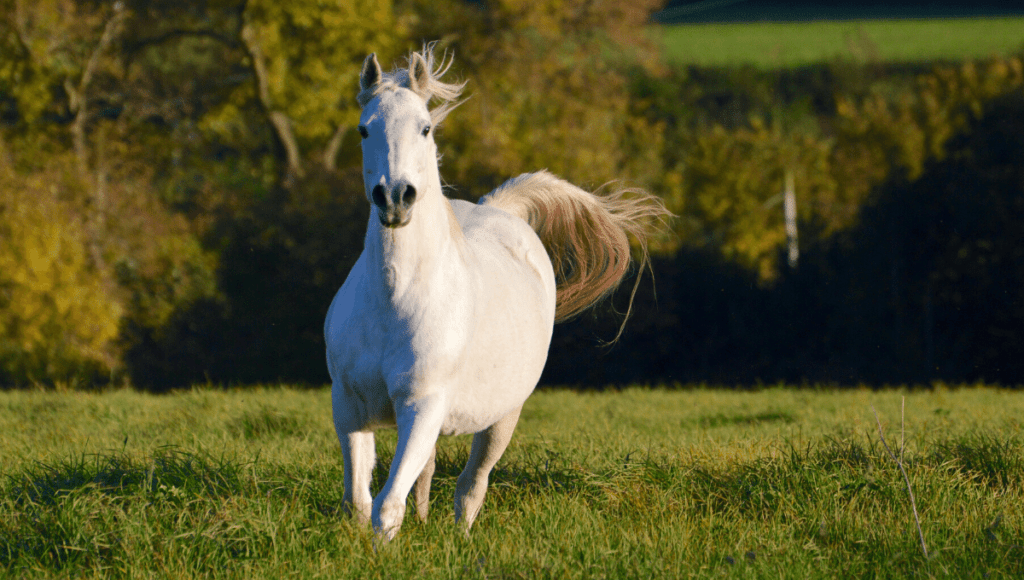
Iron Content
Beet pulp generally contains higher levels of iron compared to most forages. While iron is essential in equine diets, horses typically meet their iron needs through hay and pasture alone.
The iron in beet pulp primarily comes from two sources:
Internal iron, bound to pectin, cellulose, and hemicellulose within the plant, may release iron during hindgut fermentation. However, further research is needed to fully understand its bioavailability in horses.
Surface iron, which originates from soil and any added molasses. Surface iron levels can usually be reduced by thoroughly rinsing the beet pulp before feeding.
If feeding beet pulp to horses already on high-iron hay or those prone to iron overload, it’s wise to work with a nutritionist to balance mineral ratios and rinse the beet pulp to wash off the surface iron. Additional copper and zinc may be necessary to support optimal absorption of these critical nutrients and avoid imbalances.
To understand your horse’s total iron intake, consider a forage analysis of your hay, which will provide precise iron content levels.
Beet pulp can be a beneficial feed source, but managing iron intake is essential to support balanced nutrition, especially for horses sensitive to iron.
Nutritional Variation
The nutritional content of beet pulp can vary depending on its processing and ingredient sources. Always check the specific product’s feed tag or guaranteed analysis to ensure it meets your horse’s dietary requirements.
How to Feed Soaked Beet Pulp to Horses
Beet pulp can be fed to horses in a variety of ways, including as a standalone feed or as a mix with other feeds.
The recommended feeding rate for beet pulp is 1-2% of the horse’s body weight per day, based on dry weight.
Soaking beet pulp makes it easier to eat and tastier for horses. While beet pulp has a reputation for causing choke, this can happen with any feed eaten too quickly without proper chewing.
- Water ratio: Mix about five parts of water with one part of beet pulp.
- Temperature: Hot water can decrease the minimum soaking time.
- Form: Shredded beet pulp soaks faster than pelleted beet pulp.
- Consistency: Aim for a moist and runny consistency.
- Storage: Keep beet pulp in a non-freezing area.
- Spoilage: In the summer, feed soaked beet pulp soon after soaking because it can spoil in less than a day due to weather temperature.
- Freezing: In the winter, soak beet pulp in warm water to prevent it from freezing.
- Smell: If the beet pulp smells like vinegar, throw it away.
Introducing Beet Pulp to Your Horse’s Diet
Beet pulp is a highly digestible fibre that can impact hindgut microbial populations. The fibre it contains is very different to that of grass and hay, so to avoid digestive upsets, introduce beet pulp gradually, allowing the horse’s microbial population in the hindgut to adapt smoothly.
Suggested 10-Day Transition Schedule
Use this gradual schedule to transition your horse to beet pulp over 10 days:
Days 1 – 3: 75% current diet, 25% beet pulp
Days 4 – 6: 50% current diet, 50% beet pulp
Days 7 – 9: 25% current diet, 75% beet pulp
Day 10: 100% beet pulp
Watch for any changes in feeding behaviour, particularly if your horse has a history of choke. Horses that consume dry beet pulp too quickly may be at higher risk of choking. Dusty beet pulp can also cause throat irritation. To reduce these risks, soak the beet pulp thoroughly and offer it in smaller meals.
Following a gradual introduction schedule and proper preparation helps ensure a smooth transition to beet pulp, supporting enhanced digestive health and safe feeding practices.
Conclusion: Feeding Beet Pulp to Horses is an Excellent Choice
Our top tip is that feeding beet pulp to horses is an excellent choice for all sorts of reasons and that the choice about whether to feed it should be made based on knowledge rather than what others ‘think’.
We know beet pulp is an excellent feed choice.
Read more of our articles on laminitis prone horses here.
View our full range of products that are suitable for laminitic horses here.


